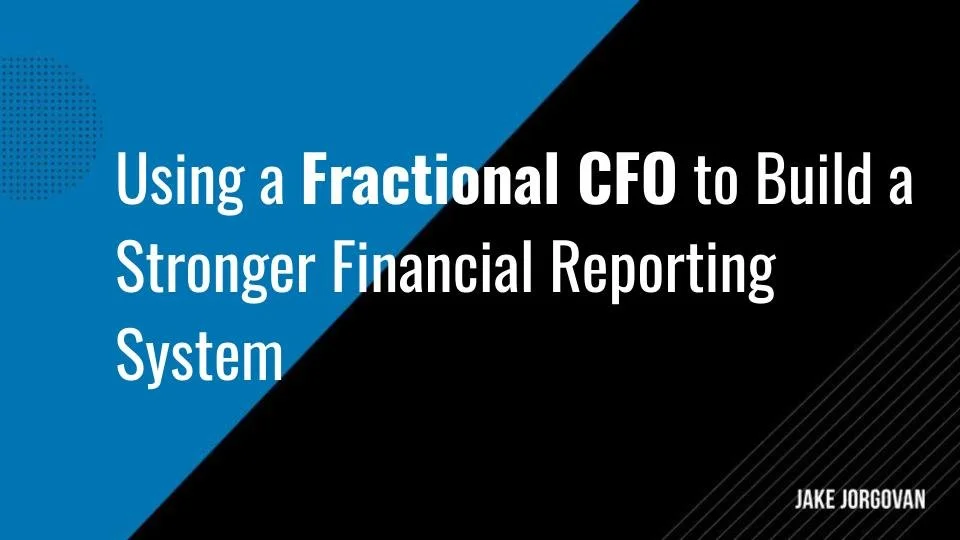Raising Business Capital in a Tough Economy: Strategies for Success in 2025
In tough economic times, raising business capital becomes a bigger challenge.
Traditional funding sources dry up quickly. Banks tighten their lending criteria, and venture capitalists become more cautious.
But without capital, businesses can't survive or grow.
I’m going to discuss strategies to secure funding when the usual avenues close.
We’ll explore:
Alternative funding sources that bypass traditional banks.
Ways to adapt your business plan to appeal to investors.
How to strengthen your network and investor relations.
Real-world examples of companies that found success despite the odds.
In a downturn, adaptability is key. There are always ways to secure the capital your business needs.
Let’s dive in!
Current Global Economic Situation in 2025
In 2025, the global economy is making it harder for businesses to raise capital.
Inflation is still high, recovery is uneven, and interest rates are going up, making it tougher to get traditional funding.
With supply chain issues and rising energy costs, businesses need to find creative and resilient ways to secure the money they need.
Impact of Economic Downturns on Traditional Funding Sources
Economic downturns often constrict liquidity by tightening bank lending practices, making it more difficult for businesses to access traditional financing options.
During these periods, venture capital also tends to retreat, with investors increasingly favoring safer, more conservative bets, which results in companies facing heightened scrutiny and more stringent requirements to secure funding.
Moreover, the uncertainty and market swings cause investors to hold back their money, making it even harder for companies to manage their financial challenges.
These shifts force businesses to seek alternative strategies:
Bank loans become harder to secure. Lenders increase collateral demands, fearing higher default risks.
Interest rates often rise. This further discourages borrowing and increases the cost of capital.
Venture capital firms tighten their portfolios. They shift focus to established companies with lower risk.
Private equity funds reduce new investments. They prioritize existing portfolio companies over new ventures.
Investor confidence drops sharply. Market instability causes hesitation, delaying or canceling funding rounds.
Credit lines shrink or disappear. Financial institutions reassess their exposure, reducing available credit.
Alternative financing options also contract. Less liquidity in the market affects non-traditional funding avenues.
Adapting to New Economic Realities
New economic realities requires businesses to be flexible in their capital raising strategies to get through these challenges.
Quick adjustments to market conditions are key for survival, and being adaptable can help discover new funding options by making the most of available resources.
Creative approaches set businesses apart from competitors and attract a broader range of investors.
Top capital raising consulting firms highlight that updating risk assessments with current data better prepares companies for unexpected challenges.
Additionally, realistic and conservative forecasts help build trust with cautious investors, especially when paired with a clear investment agreement template that sets out terms transparently.
By shifting strategies, businesses can also tap into new markets and meet the changing needs of customers, staying strong and minimizing disruptions.
5 Alternative Funding Sources for Raising Business Capital
Crowdfunding
Crowdfunding platforms showcase products to potential backers and foreign investors, simultaneously gauging consumer interest and collecting funds.
Early support helps validate market demand, which can attract further investment.
Successful campaigns highlight market readiness, driving additional financial interest.
This method effectively integrates funding with direct market feedback.
Benefits:
Wider investor reach enhances funding possibilities. Crowdfunding taps into a global investor pool.
Product validation occurs pre-market launch. Immediate feedback assesses product viability and demand.
Marketing and promotion are inherently boosted. Campaigns attract media attention and potential customers.
Equity retention is often possible. Many platforms require no equity exchange.
Challenges:
Campaigns require significant marketing efforts. Successful crowdfunding demands strategic, persistent outreach.
Funding is not guaranteed; goals must meet. Unmet goals can result in zero funding.
Intellectual property risks are heightened. Public disclosure may invite copycats before patents secure.
Backer expectations must be carefully managed. Miscommunication can lead to dissatisfaction and disputes.
When to Choose: Crowdfunding is ideal when a business seeks to engage directly with its target audience and rapidly raise funds for a specific project or product launch.
Peer-to-Peer Lending
Peer-to-peer lending effectively bypasses traditional banking constraints by directly connecting businesses with individual lenders.
This direct connection allows for flexible terms that can be tailored to meet unique funding needs.
Additionally, lower overheads associated with this method enable the offering of more competitive interest rates.
Benefits:
Flexible terms. Peer-to-peer lending often provides more flexible repayment terms compared to traditional bank loans, allowing businesses to tailor agreements to their specific needs.
Competitive interest rates. Due to lower overhead costs, peer-to-peer lending platforms can offer more competitive interest rates, making it a cost-effective option for businesses.
Quick access to capital. The application and approval process for peer-to-peer loans is typically faster, enabling businesses to access the funds they need more quickly.
Challenges:
Risk of default. Since peer-to-peer lending may involve less stringent credit checks, there is a higher risk for both borrowers and lenders, potentially leading to defaults.
Variable investor interest. The success of a loan request depends on the interest of individual investors, which can be unpredictable and may result in insufficient funding.
Limited loan amounts: Peer-to-peer platforms often have limits on the amount of capital that can be raised, which may not be sufficient for larger business projects.
When to Choose: Peer-to-peer lending is best suited for businesses seeking flexible, cost-effective financing, especially when tailored terms and quick access to capital are essential.
Strategic Alliances and Joint Ventures
Strategic alliances and joint ventures expand resources by pooling capital and expertise, which in turn fuels business growth.
These collaborations also open up new markets and distribution channels, broadening the reach of both parties involved.
Such partnerships effectively leverage the strengths of each partner, helping to mitigate financial risks. Furthermore, they foster innovation by encouraging the exchange of knowledge and skills.
Benefits:
Resource expansion. These alliances allow businesses to pool resources, including capital, expertise, and technology, which can significantly enhance growth opportunities and operational capabilities.
Market access. Strategic partnerships and joint ventures open doors to new markets and distribution channels, enabling businesses to expand their reach and customer base more effectively.
Risk sharing. By collaborating, businesses can share the financial risks associated with new ventures, reducing the burden on any single entity and increasing the chances of success.
Challenges:
Complex decision-making. Partnerships often require consensus among multiple parties, which can lead to slower decision-making processes and potential conflicts over strategy and direction.
Unequal contributions. Disparities in the contributions of resources, expertise, or effort between partners can create tension, leading to dissatisfaction and potential breakdowns in the partnership.
Dependency risks. Relying too heavily on a partner for critical resources or market access can expose a business to significant risks if the partnership fails or the partner underperforms.
When to Choose: Strategic alliances and joint ventures are ideal for businesses aiming to expand their resources, enter new markets, and share risks while fostering innovation, especially in challenging economic conditions.
Government Grants and Subsidies
Government grants and subsidies offer significant financial relief by providing non-repayable funds that help reduce financial burdens on businesses.
These incentives are designed to support specific industries and foster innovation by enabling companies to undertake riskier projects.
Additionally, such funding can stabilize businesses during economic downturns, offering a crucial safety net.
Grants and subsidies catalyze growth by providing necessary capital without the downside of equity loss.
Benefits:
Non-repayable funding. Government grants and subsidies provide businesses with financial support that does not require repayment, helping to reduce overall financial burdens and preserve cash flow.
Support for innovation and growth. These funds are often targeted toward specific industries, research, and development initiatives, enabling businesses to undertake innovative projects or expansion efforts that might otherwise be too risky.
Stabilization during economic downturns. Government grants and subsidies can act as a financial safety net during economic downturns, providing crucial support that helps businesses maintain operations and avoid layoffs.
Challenges:
Complex application processes. Securing government grants and subsidies often involves navigating complex and time-consuming application processes, which can be a barrier for smaller businesses with limited resources.
Strict compliance requirements. Grants and subsidies typically come with stringent reporting and compliance requirements, which can create administrative burdens and limit the flexibility of how funds are used.
Limited availability. Government funding is often competitive and limited, meaning not all businesses that apply will receive support, and those that do may find the amounts insufficient for their needs.
When to Choose: Government grants and subsidies are best for businesses looking to fund innovative, high-risk projects or stabilize during economic downturns without sacrificing equity.
Microfinancing and Community Development Financial Institutions
Microfinancing and Community Development Financial Institutions (CDFIs) specifically target underserved entrepreneurial groups by offering smaller, more accessible loans that are disbursed quickly.
These institutions prioritize community and economic development, channeling funds directly into startups and business expansions.
In addition to financial support, CDFIs often provide mentorship to their borrowers, further enhancing the sustainability of businesses within marginalized communities.
Microfinancing and CDFIs uniquely address the needs of underserved markets, providing necessary support where traditional financial institutions may not venture.
Benefits:
Access for underserved groups. Microfinancing and CDFIs specifically target underserved or marginalized communities, providing crucial capital to entrepreneurs who may not qualify for traditional loans.
Tailored support. These institutions often offer smaller, more accessible loans with flexible terms, along with additional support services like mentorship and financial education, which can help ensure the success and sustainability of small businesses.
Community impact. By focusing on local economic development, microfinancing and CDFIs help stimulate growth within communities, fostering job creation and enhancing overall economic stability.
Challenges:
Limited loan amounts: The smaller loan sizes typically offered by microfinancing and CDFIs may not be sufficient for businesses with larger capital needs, limiting their ability to scale quickly.
Higher interest rates: Although these loans are more accessible, they often come with higher interest rates compared to traditional bank loans, which can increase the cost of borrowing over time.
Stringent eligibility criteria: While designed to serve underserved groups, some microfinancing and CDFIs have strict eligibility requirements or focus on specific industries, which may exclude some potential borrowers.
When to Choose: Microfinancing and CDFIs are ideal for businesses in underserved communities seeking small, quick loans combined with mentorship to support sustainable growth and development.
How to Adapt Your Business Plan for Capital Raising
Step 1. Revise Financial Projections
Revising your financial projections is a critical first step in adapting your business plan for capital raising, as it ensures your business remains aligned with current economic realities.
By reflecting these realities in your forecasts, you demonstrate to investors that you are aware of and responsive to shifting market dynamics. Additionally, collaborating with one of the best financial forecasting consulting firms can yield better results.
Accurate and realistic projections convey a sense of prudence and foresight, which can significantly boost investor confidence.
Pro Tip:
Leverage industry downturns in your revised projections. Incorporate resilience metrics like liquidity ratios or debt coverage that improve during slow periods. Highlight these in discussions to emphasize your strategic financial management, setting you apart in investor evaluations.
Step 2. Demonstrate Resilience and Adaptability
By demonstrating how your business can withstand economic fluctuations, you reassure backers of your ability to overcome challenges and continue growing.
Examples of successful pivots and adjustments during economic downturns illustrate your strategic flexibility.
Operational optimizations and streamlined processes signal your resilience in managing costs, while explaining how you've diversified revenue streams emphasizes your business’s stability.
Your quick response to market changes and your team's adaptability show that your business is thriving in tough economies, making it an attractive option for investor
Pro Tip:
Leverage your data analytics to forecast potential downturn impacts and present these findings to investors. Use this data-driven approach to validate your resilience strategy, demonstrating that your decisions are informed and proactive, not just reactive. This will bolster your credibility and attract strategic investments.
Step 3. Build a Compelling Narrative
To adapt your business plan for capital raising, focus on building a compelling narrative that captures your vision.
Begin with a clear definition of your unique value proposition, emphasizing what sets your business apart.
Real-world problems that your business solves should be highlighted, showing how your solutions address specific market gaps.
Key milestones can be showcased to demonstrate your capabilities and past successes.
Adaptive strategies during downturns illustrate resilience and strategic foresight.
Future growth should be projected with clear, achievable targets that excite investors.
Data adds credibility to your narrative, supporting your claims with solid evidence.
The expertise and leadership of your team are also crucial, highlighting the skills driving your business forward.
These elements together create a narrative that informs and inspires potential investors.
Pro Tip:
Integrate customer testimonials into your narrative. Authentic feedback validates your impact and market fit, enhancing your story's appeal to investors. Position these testimonials strategically to underline problem-solving prowess and market acceptance, significantly boosting your narrative's persuasive power in investment discussions.
Step 4. Highlight a Proven Track Record
To adapt your business plan for capital raising, it's crucial to highlight a proven track record of success.
Your sales growth underscores market demand and operational strength, while key innovations show your ability to lead market trends.
Awards and recognitions add credibility, and successful exits or expansions highlight your scalability.
Client testimonials reinforce reliability, and case studies demonstrate your problem-solving expertise.
By outlining the strategies behind these successes, you suggest strong potential for future achievements, building trust and positively influencing investment decisions.
Pro Tip:
Consider incorporating data visualizations to showcase your track record. Effective graphs and charts can immediately communicate growth trends and successes to investors. Use these visuals to punctuate your achievements and make your past results both undeniable and memorable during presentations.
Case Studies and Examples of Successful Capital Raising
Several companies have successfully adapted and thrived during economic downturns by employing innovative strategies to secure funding and adapt to changing market conditions:
Mailchimp shifted its business model during the recession to focus on small and medium-sized businesses with a freemium model. This strategy significantly expanded their user base by making their services accessible to a broader audience without initial cost .
Warby Parker was founded during the Great Recession, capitalizing on the need for affordable eyewear. The company disrupted traditional retail by selling prescription glasses online at a fraction of the usual cost, appealing to budget-conscious consumers.
Airbnb emerged in 2008 after its founders identified a unique opportunity within the sharing economy to make travel accommodations more economical. By tapping into this market, Airbnb addressed a direct need created by the recession, facilitating affordable travel options.
Netflix transformed its business model to streaming during the recession, which attracted a significant increase in subscriptions. Offering an extensive library of entertainment at a low monthly fee proved immensely popular as consumers sought cost-effective home entertainment .
These cases teach you to stay flexible, think creatively, and never lose sight of long-term goals when raising capital in challenging conditions.
Strategic Adaptations: Key Moves for Securing Capital in Economic Downturns
Securing business capital in a tough economy demands a proactive, strategic approach. Adaptability is key.
While traditional funding tightens, explore alternatives like crowdfunding, peer-to-peer lending, and strategic partnerships.
Keep your business plan flexible, update financial projections, and maintain a compelling narrative to attract investors.
Strengthen your network through professional events and organizations to enhance visibility and find potential investors.
Stay prepared, adapt to changes, and continuously engage with your financial strategies to navigate economic challenges and secure necessary capital for growth.






















